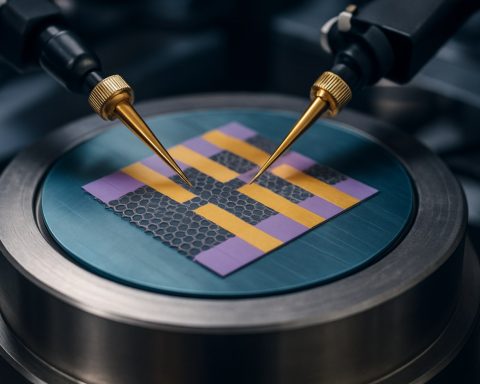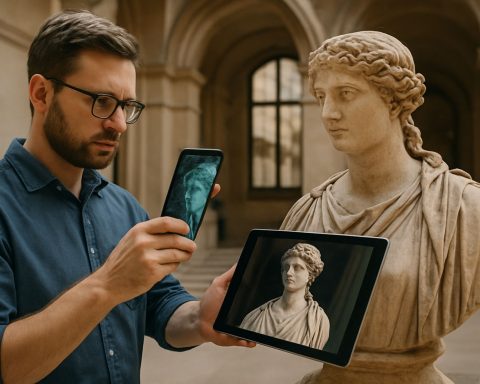- Toyota’s next-generation solid-state battery promises nearly 750 miles of range and 30-year battery life, drastically reducing range anxiety for electric vehicles.
- Solid-state batteries use a solid electrolyte, making them safer, lighter, and more durable than current lithium-ion batteries.
- Rapid charging is a key feature—just ten minutes to recharge, making EV use as convenient as fueling gasoline cars.
- Longer-lasting batteries and fewer replacements lower costs and environmental impact while enabling more compact and spacious EV designs.
- Mass adoption of solid-state technology could redefine electric mobility, though scaling production and sourcing materials remain key hurdles.
In the relentless pursuit of cleaner roads and stretched horizons, a new breakthrough from Japan is poised to redraw the map for electric vehicles. Toyota, a company whose legacy includes the iconic Prius hybrid, now aims to leapfrog competitors with a revolutionary solid-state battery—one that whispers promises of nearly 750 miles on a single charge, astonishing durability, and lightning-fast refueling.
Picture a car gliding from Tokyo’s neon heart to the rural tranquility of Hokkaido—no pit stop, no restless search for a charging station. The math is staggering: 745 miles in one go, 30 years of battery life, and a “refill” achieved in barely ten minutes. Such numbers reframe what’s possible, offering something tantalizingly close to the freedom gasoline cars have monopolized for a century.
Until now, range anxiety has loomed over EV adoption like a stubborn cloud. Even as Teslas notch up record sales and Fords cruise the highways on electrons, the dream of detached battery dependence has felt out of reach for most drivers. Toyota’s move could change everything. As solid-state batteries slide from lab benches to assembly lines, they bring practical and environmental advantages that could outshine lithium-ion batteries, the workhorse of current technology.
Solid-state batteries integrate a solid electrolyte instead of the flammable liquid used in lithium-ion models. This not only boosts energy density but makes them safer, less prone to overheating, and hugely extended in expected lifespan—think tens of thousands of cycles versus the current thousands. For drivers, that means a vehicle that won’t simply last a few trade-ins, but could be passed down like a family heirloom.
The new battery packs, co-developed with industry heavyweight Idemitsu Kosan, eye commercial debut in Toyota’s next-generation electric vehicles as early as 2027. If achieved, drivers could experience a rapid 10-minute charging stop—the time it takes, perhaps, to grab a cup of coffee—making electric travel feel as effortless as refueling at a traditional pump.
The ripple effects go beyond convenience. Fewer battery replacements and longer lives slash both costs and environmental waste. Higher energy density means smaller, lighter battery packs, which offers a double dividend: greater range and more spacious vehicle interiors, without extra weight.
Solid-state technology isn’t just Toyota’s moonshot. Harvard University experts have demonstrated similar batteries that recharge in the time it takes to fill a gas tank, while enduring far more cycles than conventional cells. Yet, the Japanese carmaker’s scale—and its track record for mass-market innovation—gives this launch particular clout.
Regulation and infrastructure must still keep pace, and obstacles—cost, mass production hurdles, and raw material sourcing—linger. But the direction is unmistakable: the next wave of electric vehicles won’t just compete with gasoline—they’ll eclipse it.
Takeaway: A solid-state future is closer than ever, promising not just more miles, but a complete rewiring of what we expect from our cars—and our world. For drivers, the garage of 2030 may look less like a gas station and more like the dawn of true automotive freedom.
The Ultimate EV Revolution? Toyota’s Solid-State Battery Could Change Everything You Know About Electric Cars
Toyota’s Solid-State Battery: Breaking Down the Big Leap in EV Technology
Toyota’s recent announcement that it plans to debut a solid-state electric vehicle (EV) battery boasting up to 750 miles of range, 30 years of battery life, and ten-minute charging by 2027 has made major waves in the industry. But what does this really mean for drivers, the environment, and the future of electric mobility?
Let’s go deeper with essential facts and insights that take you beyond the headlines.
—
Essential Facts about Toyota’s Solid-State Batteries
1. What is a Solid-State Battery?
Unlike traditional lithium-ion batteries that use liquid electrolytes, solid-state batteries use a solid electrolyte. This fundamental difference brings massive benefits:
– Higher Energy Density: More power in a smaller, lighter package.
– Safety: Far lower risk of fire or explosion due to non-flammable electrolytes.
– Longer Lifespan: Lab cycles suggest up to ten times longer usable life ([Toyota Global Newsroom](https://global.toyota)).
2. Real-World Use Cases
– Long-Distance Commuting: 750 miles on a single charge is equivalent to a round trip from Los Angeles to San Francisco, eliminating range anxiety even for road trippers.
– Commercial Fleets: Delivery vans or taxis could run all day without downtime.
– Rural & Remote Areas: EVs will be viable options where chargers are scarce.
3. Environmental Impact
– Fewer Replacements: Batteries lasting 30 years mean less waste.
– Smaller Packs: Reducing raw material needs and improving energy efficiency.
4. Charging Time Competition
– 10-Minute Charge: Matches or beats hydrogen fuel cell refueling and closes the “convenience gap” with gasoline.
—
Reviews, Comparisons & Market Forecasts
How Does It Stack Up?
– Vs. Tesla: Tesla’s highest-range models (Model S Long Range) offer up to 405 miles under EPA estimates—Toyota’s claims nearly double this with faster charging and higher longevity ([Tesla](https://tesla.com)).
– Vs. Lithium-Ion: Solid-state is less prone to thermal runaway, potentially safer, and more durable.
Industry Trends
– Growing Investment: Ford, VW, BMW, and Nissan are all investing in solid-state research, suggesting an industry pivot within the next decade.
– Market Size: IDTechEx forecasts the solid-state battery market could reach $6 billion by 2031 ([IDTechEx](https://www.idtechex.com)).
—
Controversies & Limitations
– Cost: Early prototypes cost up to 4-8 times more per kWh than lithium-ion. Mass production scaling remains an open question.
– Manufacturing Hurdles: Solid electrolyte uniformity, dendrite formation, and scaling up production are major technical obstacles.
– Raw Materials: Some solid electrolytes require rare or expensive materials (e.g., lithium metal, sulfides).
—
Security, Sustainability, and Compatibility
Security:
– Enhanced thermal stability reduces fire hazard risk.
Sustainability:
– Fewer replacements over a vehicle’s life mean lower environmental impact.
– Potential for wider recycling due to fewer toxic/corrosive components (though recycling infrastructure will need to adapt).
Compatibility:
– Advanced battery management systems will be essential, but most next-gen EV platforms (including Toyota’s e-TNGA) are designed for modular battery integration.
—
Life Hacks & How-To Steps for EV Owners
– Strategize Your Charging: Leverage new rapid-charging times to sync pit stops with other activities (coffee breaks, groceries).
– Resale Value: Longer-lasting batteries mean EVs will retain value longer—good news for second-hand buyers.
– Pre-Order Early: If you’re in the market, monitor Toyota’s and its partners’ official channels for early reservation opportunities.
—
Insights & Predictions: What’s Next?
– Mainstream by 2030: Expect other automakers to follow suit—solid-state batteries could become industry standard.
– New Mobility Services: Fleets for ride-share, delivery, and commercial use might be among the first adopters due to cost offsets from longevity.
– Regulatory Push: Governments may incentivize solid-state adoption thanks to safety and environmental advantages.
—
Fast Facts & Pressing Reader Questions: Quickfire Q&A
Q: When can I buy a Toyota with a solid-state battery?
A: Toyota targets commercial sales as early as 2027.
Q: Is it really 750 miles per charge?
A: That’s the goal—though EPA and real-world results may vary in early models.
Q: Will it cost more?
A: Likely, at first—but costs are expected to decrease with scale and competition.
Q: Can I charge at current fast-chargers?
A: Toyota aims for compatibility with existing charging infrastructure, but full benefits will come with specially designed high-power chargers.
Q: Will the battery outlast the car?
A: Possibly—Toyota’s claims of 30-year battery life would mean the battery could survive multiple vehicle bodies.
—
Pros & Cons Overview
| Pros | Cons |
|————————————|————————————————————-|
| Far superior range | Higher early cost predicted |
| Ultra-fast charging | Uncertainty in mass production scaling |
| Dramatic safety improvement | Limited track record in mass-market use |
| Eco-friendly longevity | Recycling infrastructure will need modernization |
| More interior space | Full charging infrastructure upgrades may be necessary |
—
Actionable Recommendations & Quick Tips
– Keep Tabs on Industry News: Sign up for alerts from reputable car news outlets or directly from Toyota.
– Plan Upgrades Strategically: If you’re considering an EV, evaluate whether you can wait until late-decade for this leap in technology.
– Ask Dealers Direct: When shopping, inquire about projected battery types and upgrade paths—some current EVs may offer future retrofits.
– Advocate for Charging Infrastructure: Support local and regional initiatives to upgrade charging stations in anticipation of new battery tech.
—
Suggested Related Links
– For Toyota’s latest official information, visit Toyota
– For current EV insights and trends, check Tesla
– For automotive market data, browse IDTechEx
—
Bottom Line:
Toyota’s solid-state battery ambitions promise to redefine what electric cars can do, offering gasoline-beating range, remarkable longevity, and rapid charging. While challenges remain, the next decade could see EVs become the automatic first choice for drivers everywhere—making “range anxiety” a thing of the past.
Stay informed and get ready for the solid-state era—it’s closer than you think!











